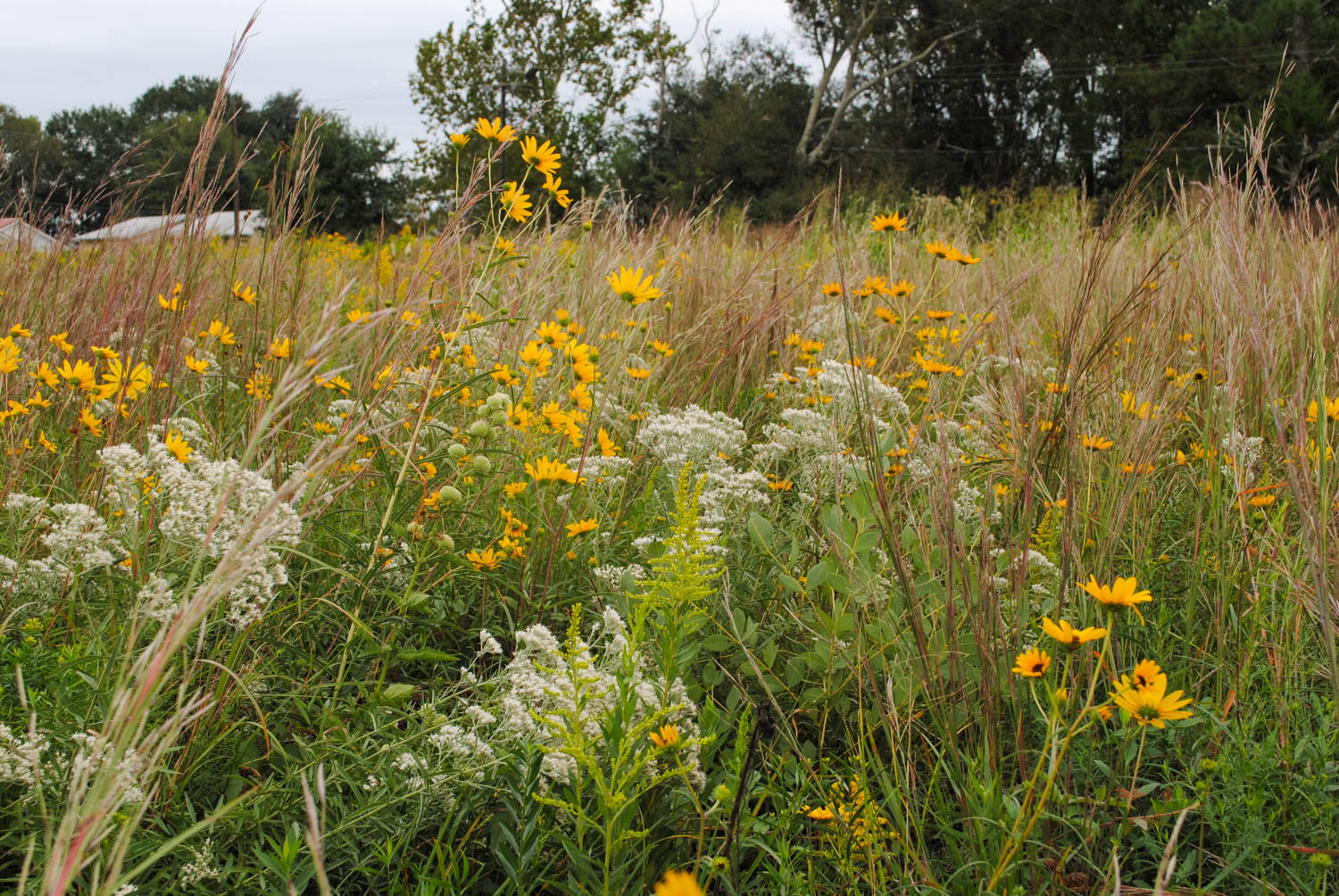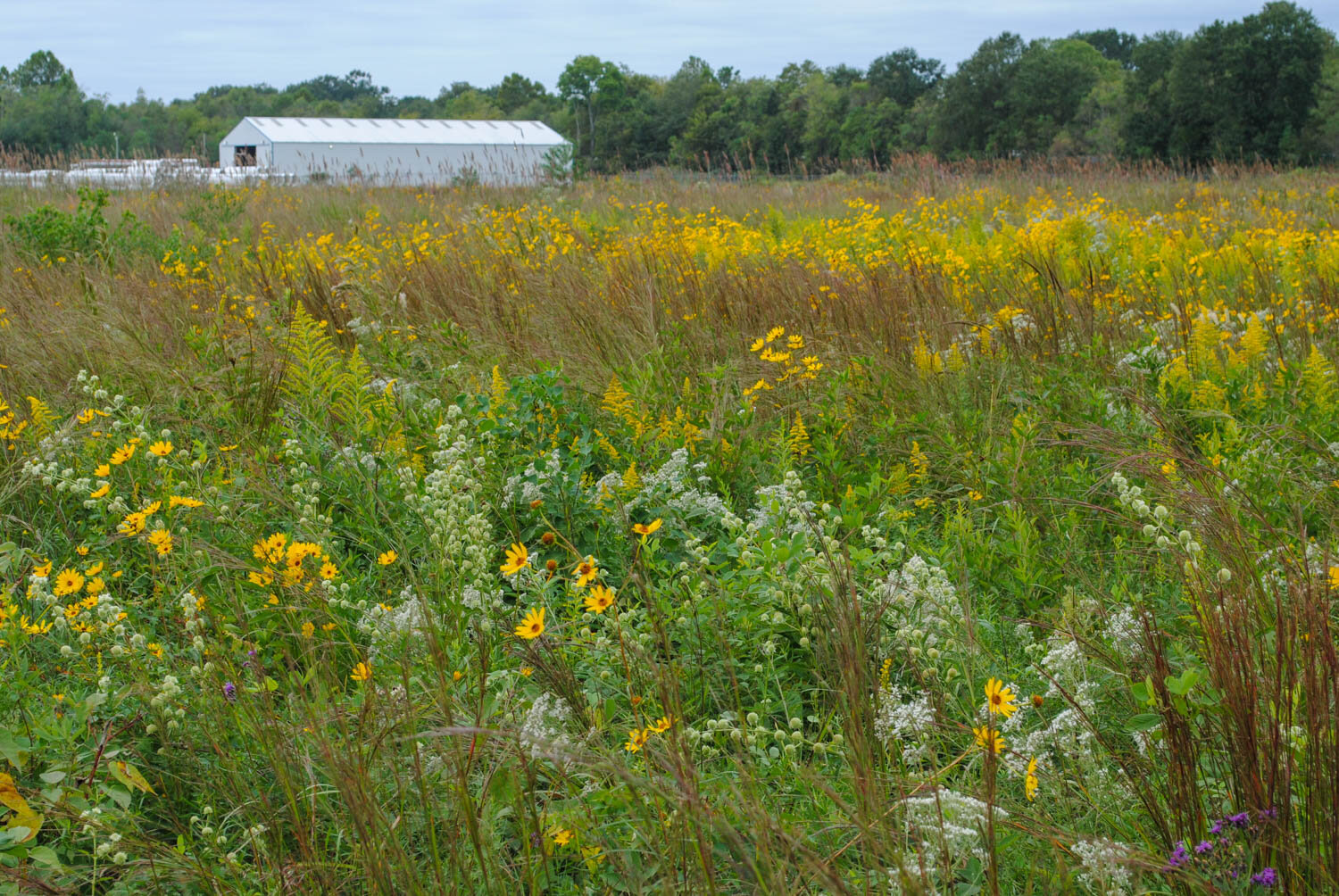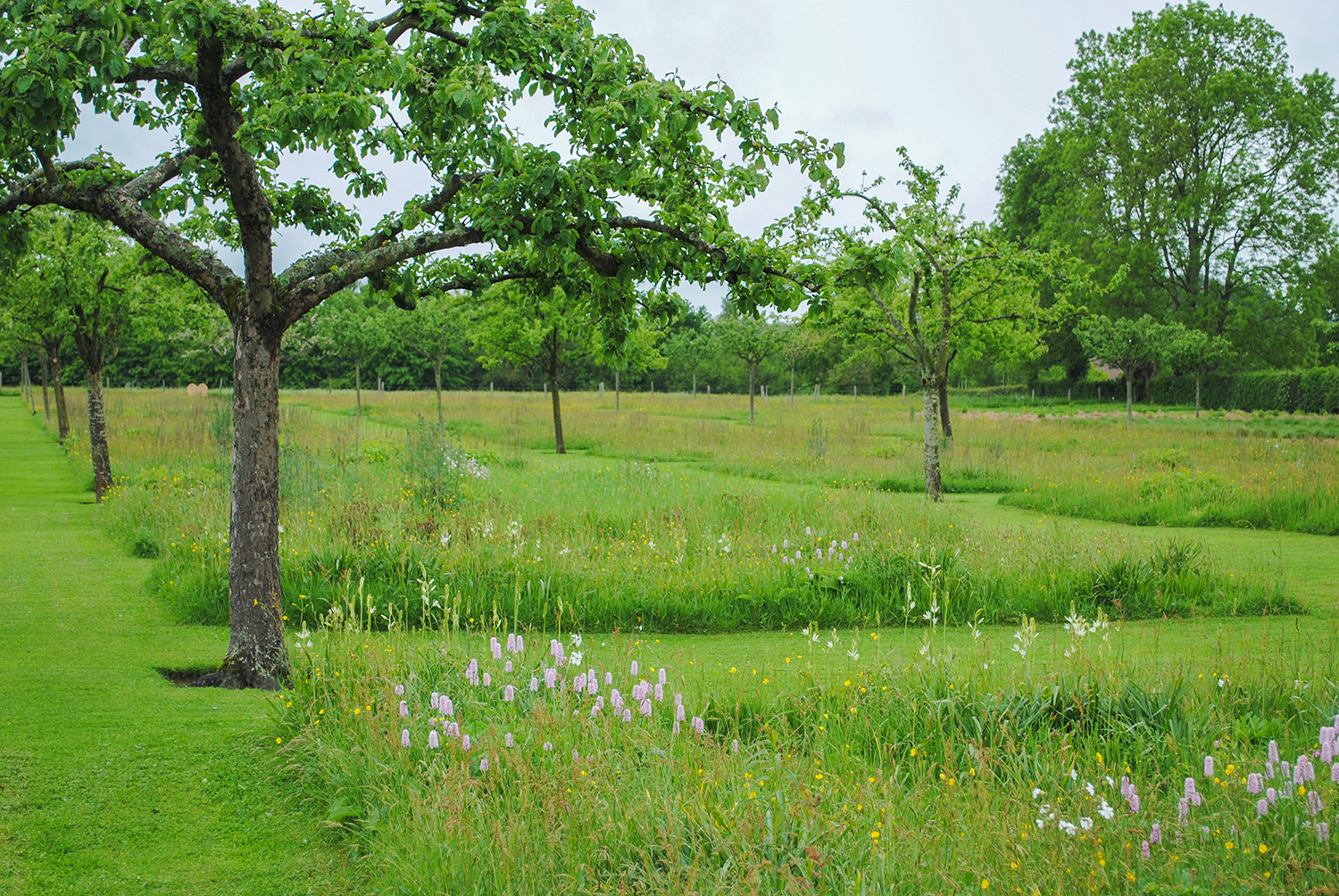“I think there’s a prairie in Eunice,” Dawn Stover said as we drove past a sign indicating the Louisiana town a few miles ahead.
I replied, “Oh, really,” as I pulled out my phone to access Google maps to investigate. Sure enough, just north of town I found a large swath of green with the label Cajun Prairie.
It was last fall, October 2019. We were on our way back to Nacogdoches from the International Plant Propagators’ Society-Southern Region meeting in Louisiana, Dawn and I upfront and Dawn’s greenhouse technician Jordan Cunningham was in the back. “I’m fine to stop if y’all are,” I said. Both agreed, and I plotted a course.
At first, we unknowingly drove past the main ten-acre prairie. GPS took us to a random spot in the road, and we kept driving to scope out the site. North of the prairie, we found a gravel parking lot at a granary that we parked in off to the side. We hopped out and immediately started fending off giant mosquitoes. Well, I worse than Dawn and Jordan because I was sporting shorts. So, I shimmied some jeans on over the shorts and the bloodsucking ceased. But, such a trivial annoyance was worth it to see the field of yellow Helianthus and Solidago swaying in the breeze.
An 18-wheeler that needed to pull in where we were forced us back in the car, and we drove back to the south side of the prairie and found the parking lot for the main entrance. Here, we could see a narrow concrete path led off in both directions to allow visitors solid ground to enjoy the ecology. It ended up being a rectangle walk around the whole area so that visitors could fully appreciate the site.
Saccharum flower heads bend in the breeze
A spot to sit and enjoy the cajun prairie.
The prairie was magical and wild on that cool, autumn day. The colors were spectacular for fall with flowers and foliage across the field glowing under the drab sky.
An incredible mix of forbs in the cajun prairie
What a view those houses have in the distance.
Kneeling down, you immerse yourself in the prairie and see a different perspective.
I saw many flora friends like Pycnanthemum tenufolium, Helianthus angustifolius, Arnoglossum ovatum, and Liatris pycnostachya. I delighted in the color echos between the plant life and the urban sprawl. There was the russet Schizachryium and the rusted granary roof, the white outbuildings and the ivory petals on Hibiscus moscheutos.
What a color echo between the grass and the roof.
The petals on Hibiscus moscheutos shines bright white against the prairie.
A late Arnoglossum ovatum stands above the prairie
I always love getting in close and seeing the intricate detail of Arnoglossum flowers.
One species that composed the prairie tapestry that deserves wider use was Hyptis alata (clustered bushmint). The plant reminds me of Eryngium yuccifolium with the orb inflorescences, but unlike rattlesnake master that clusters the flowers at the top, here the spheres are scattered up and down the stem and look like lollypops with their peduncles. While I have a few plants at home, seeing them in habitat gave me ideas about how to intermingle them with wispy grasses.
Hyptis alata tended to be grouped together in the prairie, likely because it sows itself nearby.
Another photograph of Hyptis paired with Schizachyrium, Helianthus, Solidago, and more.
I was also delighted to see the glaucous blades of Carex flaccosperma (or glaucodea, I can’t tell them apart this time of year) growing in the understory of this prairie jungle. I have long suspected that these twelve-inch tall Carex species that thrive in varying light levels in my yard could grow underneath forbs as a matrix layer, and here it was doing just that in a cajun prairie in central Louisiana.
Carex flaccosperma (or glaucodea) hiding on the ground plain under the taller perennials.
One new plant that I learned and suspect could be very useful in southern naturalistic plantings was Chromolaena ivifolia, ivyleaf thoroughwort. Resembling a Conoclinium coelestinum (blue mistflower) on steroids, it tops out around 3–4 ft tall. We had seen it just days earlier near a bridge on our way to Baton Rouge, and here it was again. The flowers were a rich sky blue, and in their fade they turn dark brown and appear as floating freckles on the golden face of the prairie.
Such a beautiful blue flower on Chromolaena ivifolia that also contrasted well with the yellows from Helianthus and Solidago.
Even the spent flowers of Chromolaena ivifolia were ornamental when they turned dark brown.
It was interesting to note that no growth was over our heads. Near the base of some plants I noticed what appeared regrowth from a cut as well as tractor treads that should have been long gone. I wondered if this prairie had been mowed sometime earlier in summer, and I’d love to talk with those who maintain it to learn if that’s correct. Another observation supporting my hypothesis was how late the Hyptis and Liatris were blooming. Both were already setting seed at my house back in Texas, yet here they were in full bloom.
Having soaked in as much of the cajun prairie as we could, we headed back to the car to return home. I thought cajun prairie was just a label, but after reading more about these ecosystems I’ve learned they are unique and different.
What we saw today was a recreated remnant, planted back in 1988 by volunteers and those that wanted to share what much of the southeast used to resemble before we humans came along. I admire the efforts of all those who helped to create this prairie as a lasting vision. Visiting it was great mental fodder as I continue my search for flora to use in naturalistic plantings in the southeast US.
One last look at the cajun prairie in Eunice, Louisiana.





















